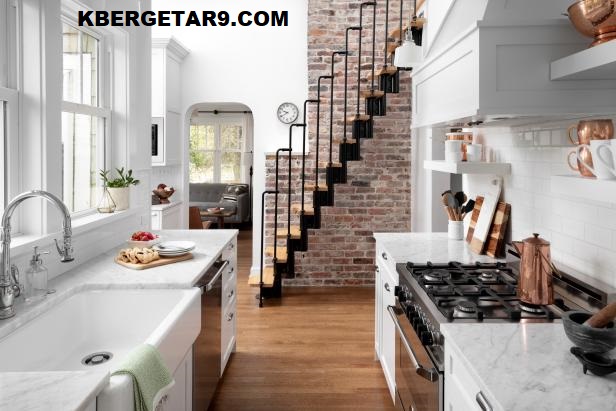Introduction
Renovating a kitchen is one of the most rewarding home improvement projects. It not only enhances the aesthetic appeal of your home but also increases its value. However, embarking on a kitchen remodeling journey requires careful planning, attention to detail, and informed decision-making. In this guide, we’ll explore the essential steps involved in renovating your kitchen, from assessing the need for renovation to completing the project successfully.
Assessing the Need for Renovation
Before diving into the renovation process, it’s crucial to assess the current state of your kitchen. Identify any issues such as outdated design, insufficient storage, or dysfunctional layout that need to be addressed. Understanding the shortcomings of your existing kitchen will help you prioritize renovations and allocate your budget effectively.
Signs it’s Time for a Kitchen Remodel
- Outdated appliances
- Worn-out cabinets and countertops
- Inadequate storage space
- Poor lighting and ventilation
- Dated design style

Setting a Budget
Determining your budget is a fundamental step in any renovation project. Consider factors such as the scope of work, desired upgrades, and quality of materials when setting your budget. It’s essential to be realistic and leave room for unexpected expenses to avoid overspending.
Budget Allocation
- Labor costs
- Materials and finishes
- Appliances
- Contingency fund
Choosing a Design Style
The design style of your kitchen sets the tone for the entire space. Whether you prefer modern minimalism, rustic charm, or timeless elegance, selecting the right design style is key to achieving your desired aesthetic.
Popular Design Styles
- Contemporary
- Farmhouse
- Industrial
- Traditional
- Transitional
Selecting Materials and Finishes
The materials and finishes you choose for your kitchen can significantly impact its durability, functionality, and visual appeal. From countertops to flooring, explore various options and select high-quality materials that align with your design vision and lifestyle.
Material Options
- Quartz
- Granite
- Butcher block
- Stainless steel
- Ceramic tile
Hiring Professionals vs. DIY
Deciding whether to hire professionals or tackle the renovation as a DIY project depends on your skill level, time availability, and budget. While DIY renovations can save money, complex projects may require the expertise of professionals to ensure quality results.
Pros and Cons
- DIY: Cost-effective, but time-consuming and labor-intensive
- Professionals: Expertise and efficiency, but higher costs
Planning the Layout
The layout of your kitchen plays a crucial role in its functionality and efficiency. Consider factors such as workflow, traffic patterns, and ergonomics when designing the layout to create a space that is both practical and visually appealing.
Common Layouts
- Galley
- L-shaped
- U-shaped
- Island
- Open-concept
Updating Appliances
Modern appliances not only enhance the functionality of your kitchen but also contribute to its energy efficiency and aesthetic appeal. Evaluate your current appliances and consider upgrading to energy-efficient models that meet your cooking needs.
Appliance Upgrades
- Refrigerator
- Oven and range
- Dishwasher
- Microwave
- Ventilation hood
Maximizing Storage Space
Effective storage solutions are essential for keeping your kitchen organized and clutter-free. Explore innovative storage solutions such as pull-out drawers, pantry organizers, and vertical storage to maximize every inch of space.
Storage Solutions
- Cabinet organizers
- Drawer dividers
- Lazy Susans
- Wall-mounted racks
- Overhead storage
Enhancing Lighting
Proper lighting can transform the look and feel of your kitchen while improving visibility and functionality. Incorporate a mix of ambient, task, and accent lighting to create layers of illumination that enhance the overall ambiance.
Lighting Tips
- Under-cabinet lighting
- Pendant lights
- Recessed lighting
- Statement chandeliers
- Natural light sources
Flooring Options
The flooring you choose for your kitchen should be durable, easy to clean, and resistant to moisture and stains. Explore various flooring options such as hardwood, tile, laminate, and vinyl to find the perfect balance of style and functionality.
Flooring Materials
- Hardwood
- Ceramic tile
- Laminate
- Vinyl
- Natural stone
Adding Decorative Elements
Incorporating decorative elements into your kitchen design adds personality and visual interest to the space. From backsplash tiles to decorative hardware, explore creative ways to infuse your personal style into every aspect of your kitchen.
Decorative Touches
- Backsplash
- Cabinet hardware
- Faucets and fixtures
- Artwork and accessories
- Window treatments
Energy Efficiency Considerations
Creating an energy-efficient kitchen not only reduces your carbon footprint but also saves you money on utility bills. Invest in energy-efficient appliances, lighting, and insulation to minimize energy consumption and maximize sustainability.
Energy-Saving Features
- Energy Star-rated appliances
- LED lighting
- Insulated windows and doors
- Efficient HVAC systems
- Smart home technology
Dealing with Plumbing and Electrical Work
Renovating your kitchen often involves updates to plumbing and electrical systems to accommodate new fixtures and appliances. Hire licensed professionals to handle any plumbing or electrical work to ensure compliance with building codes and safety standards.
Plumbing and Electrical Upgrades
- Installing new plumbing fixtures
- Upgrading electrical wiring
- Adding GFCI outlets
- Installing lighting fixtures
- Connecting appliances
Timeline for Completion
Creating a realistic timeline is essential for managing expectations and keeping the renovation on track. Consider factors such as the scope of work, availability of materials, and contractor schedules when estimating the duration of the project.
Project Timeline
- Planning and design phase
- Demolition and prep work
- Installation of fixtures and finishes
- Final touches and inspections
- Project completion and cleanup
Tips for a Successful Renovation
- Start with a clear vision and realistic budget
- Research and plan extensively before starting the renovation
- Hire reputable professionals and obtain multiple quotes
- Communicate openly with your contractor throughout the process
- Be flexible and prepared for unexpected challenges
Common Mistakes to Avoid
- Underestimating the budget and scope of work
- Sacrificing quality for affordability
- Ignoring functionality in favor of aesthetics
- Overlooking proper ventilation and lighting
- Skipping necessary permits and inspections

Conclusion
Embarking on a kitchen renovation journey can be both exciting and challenging. By following the essential steps outlined in this guide and avoiding common pitfalls, you can create a beautiful and functional kitchen that enhances your home and lifestyle for years to come.
FAQs
- How long does a kitchen renovation typically take?
- The duration of a kitchen renovation varies depending on the scope of work and complexity of the project. On average, it can take anywhere from several weeks to a few months to complete.
- How much does a kitchen renovation cost?
- The cost of a kitchen renovation depends on factors such as the size of the space, quality of materials, and extent of upgrades. It’s essential to set a realistic budget and obtain multiple quotes from contractors.
- Do I need to hire professionals for my kitchen renovation?
- While DIY renovations can be cost-effective, complex projects may require the expertise of professionals to ensure quality results and compliance with building codes.
- What are some popular design styles for kitchens?
- Popular design styles for kitchens include contemporary, farmhouse, industrial, traditional, and transitional. Choose a style that reflects your personal taste and complements your home’s architecture.
- How can I maximize storage space in my kitchen?
- Maximize storage space in your kitchen by incorporating innovative solutions such as cabinet organizers, drawer dividers, and wall-mounted racks. Evaluate your storage needs and prioritize functionality when designing your kitchen.


